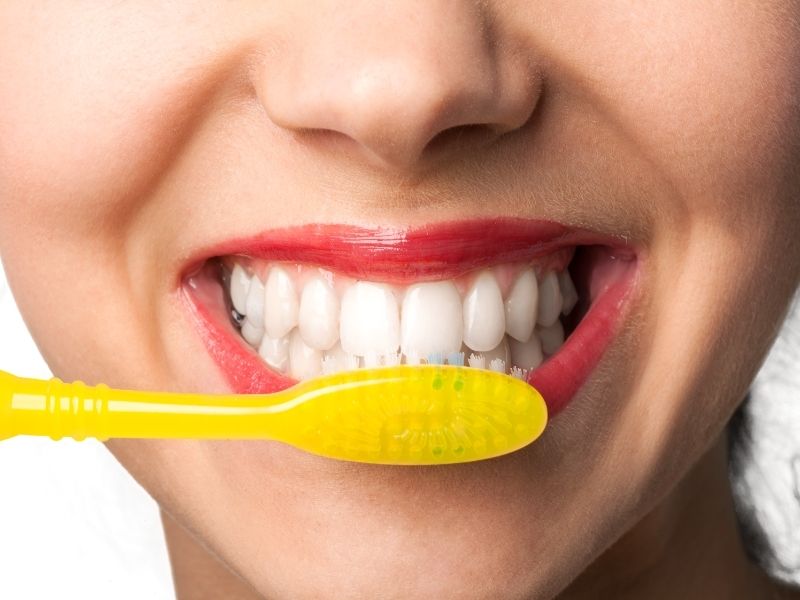DENTAL HYGIENE
A visit to the dentist is essential for good oral hygiene and is the best way to detect problems in the early stages. Identifying and treating early saves unnecessary discomfort, time, and money.
Contents
Routine Dental Checkups
Twice-yearly check-ups are recommended by the dental professional. With age and the condition of your teeth and gums, your oral hygiene needs to change. More or less frequent check-ups than twice a year may be recommended by your dentist.
What to Expect
Your dental health check-up comprises:
- Oral, face, jaw, and neck examination
- A digital diagnostic examination as determined by your dentist
- An examination of the gum pockets
- Dental scaling
- Comprehensive electronic dental record
Visual Examination
During the optical examination, the intraoral camera is used to magnify and illuminate all surfaces inside the mouth. You can watch the video examination in real time, tooth by tooth, on your dentist's monitor.
As well as looking for cracks and decay, your dentist will also look for growths and sores on the roof and floor of your mouth, tongue, lips, gums, and the lining of your cheeks and gums. Your dentist will then check the lymph nodes in your head, jaw, and neck for pain, tenderness, and flexibility.
Digital Diagnostics
Digital X-rays: Digital X-rays can detect dental problems that cannot be seen with a visual exam. Digital X-rays provide instant results and emit 90% less radiation. The frequency will be determined by the dentist.
3D imaging: The exact position and shape of each tooth are determined using three-dimensional imaging technology. This technology can be used to create a dental plan or to monitor progress.
Gingival Pocket Exam
Healthy gums are a prerequisite for healthy teeth. Examining the gum pockets helps to determine the presence or risk of gum (periodontal) disease.
What to Know:
- Each tooth is located in a gummy pocket. It is in this pocket that food particles and plaque naturally accumulate.
- Food particles and plaque are removed from the pocket by daily brushing and flossing. If left untreated, harmful bacteria can infiltrate the gum and cause the periodontal pocket to deepen.
- The risk of tooth damage and infection leading to gum disease increases as the depth of the pocket increases.
- To measure the depth of each pocket, a hand-held instrument is gently inserted between the gums and teeth (sulcus) during the examination.
- In its early stages, gum disease may be reversible. Because it rarely causes pain, it is possible to have gum disease and not know it.


Professional Teeth Cleaning
Special instruments are used to clean your teeth, removing plaque from above and below the gums. Your teeth will then be polished. Polishing makes your teeth look and feel good. It also smooths the surface of the teeth, reducing the risk of plaque build-up.
Electronic Dental Records
We have electronic records of dental examinations, diagnosis, and treatment. Our patients benefit because our dentists and specialists have instant, comprehensive access to their medical history, as well as the results of previous and current examinations, diagnoses, treatment plans, and progress reports. EHRs improve safety and clinical efficiency, helping to reduce pre- and in-office wait times.
Good Oral Hygiene
Keeping plaque and food particles out of your mouth is the key to healthy teeth and gums. Plaque attracts harmful bacteria that cause decay, gum disease, and bad breath. Bacteria can also be attracted to your tongue. Tiny pieces of food accumulate on your tongue during the normal eating process. Bacteria form a filmy white coating on the tip of your tongue as these fragments break down. To help prevent plaque and harmful bacteria from building up in your mouth, follow the four-step routine below.
- Simple four-step routine
- Keep your teeth and gums healthy:
- Brush twice a day (after breakfast and before bed) and use an antiseptic mouthwash.
- Use dental floss every day
- Brush your tongue regularly with a toothbrush or tongue scraper
- Visit your dentist for routine dental checkups
Benefits of Good Hygiene
By practicing good oral hygiene, you will:
- Remove less plaque during routine dental visits, making professional cleanings quicker and more comfortable
- Reduce your need for dental treatment due to tooth decay or gum disease
- Reduce your annual dental budget
- Healthier feeling
- Have fresher breath
- More confident smile
Infants & Small Children
The European Dentist of Paediatrics recommends that a child's first visit to the dentist should be around the age of three unless any of these dental health risk factors are present:
- Going to sleep with a cup or bottle
- Sucking their thumbs
- Staining of teeth
- Down's condition
Children's Oral Hygiene
Wipe your child's teeth with a damp washcloth every day to remove plaque as soon as your child's teeth begin to erupt.
As your child gets older, use a soft toothbrush with toothpaste that does not contain fluoride.
When your child is ready to use fluoridated toothpaste, use only a small pea-sized amount on the toothbrush. Children's teeth can become discolored (dental fluorosis) if they swallow too much-fluoridated toothpaste.
THANK YOU FOR CHOOSING TRUDENT CLINICS

